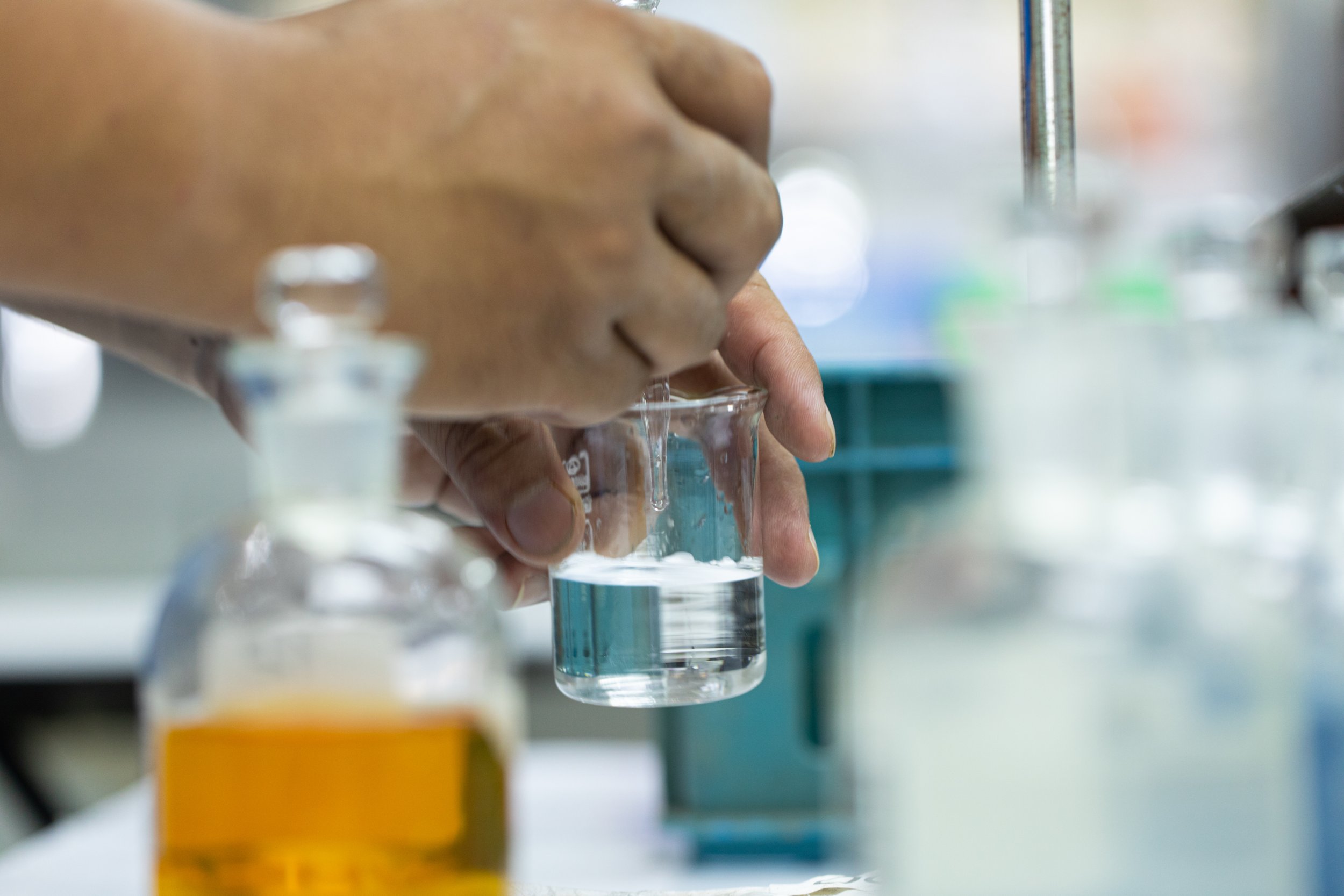
State-of-the-art equipment and accomplished scientists to provide accurate insight
LAB SERVICES
We are equipped to provide the wastewater industry quick and accurate laboratory data to understand and monitor the most efficient ways to maintain compliance and a healthy running facility.

Analyses we offer
We’re ready to help you understand your system. Our services go beyond testing as we make sure you understand what every result means and next steps to maintaining the health or any issues we might discover.






Biological Health Assessment
Anaerobic Processes
-
Using a microscope, we determine the Floc size, Floc morphology, number of dispersed bacteria, the amount of debris, the numbers and types of filamentous bacteria, types of higher life forms.
-
Anaerobic Toxicity Assay (ATA) is an anaerobic Dose/Response test based on Biogas or Methane Formation Rate.
-
The ATP formation rate indicates how much useful energy metabolism is occurring and indicates biomass health.
-
The relative amounts of methane, carbon dioxide and carbon monoxide indicates the health of methanogenic processes.
-
Changes in the profile can indicate unbalanced anaerobic conditions. The volatile organic acids we measure by GC FID include: formic, acetic, propionic, butyric, valeric, and isovaleric.
-
Accumulation of Long Chain Fatty Acids can coat the biomass and reduce mass transfer of substrates and oxygen. LCFAs also contribute to foaming problems. LCFAs are also high BOD compounds and can contribute to process oxygen demand and effluent BOD. Using GC-MS we can quantify: palmitic, palmitoleic, heptadecanoic, stearic, myristic, oleic, palmitoleic, and linoleic acids.
Aerobic Processes
-
Using a microscope, we determine the Floc size, Floc morphology, number of dispersed bacteria, the amount of debris, the numbers and types of filamentous bacteria, types of higher life forms.
-
The ratio of VSS/TSS can indicate the amount of inorganic trash in biomass.
-
Exocellular polymers are the source of natural flocculation allowing the biomass to efficiently settle. The amount of exocellular polymers should be between 8-12% of VSS.
-
Not all of the biomass in a wastewater treatment process is metabolically active. Using a redox stain, we can determine the percentage of metabolically active bacteria in the process. This should be greater than 30 percent of the total bacteria.
-
Oxygen uptake rate is a common measure of aerobic metabolism and its use of oxygen as its terminal electron acceptor. The OUR should be greater than 10 mg/gram VSS/hour.
-
The ATP formation rate indicates how much useful energy metabolism is occurring and indicates biomass health. The ATP generation rate should be greater than 100 mg/gram VSS/hr.
-
Nitrogen and phosphorous are required nutrients for wastewater process biology. The nitrogen content of the biomass should be 8- 10% of the VSS and phosphorous should be 0.8 to 1.2% of the VSS. If the nitrogen or phosphorous is too low, process performance can be adversely effected.
-
Nitrifiers are very susceptible to process inhibition. Nitrification assays can be conducted in our lab to determine if chemicals or waste streams are a source of poor nitrification performance
-
We can conduct a variety of tests employing respirometers to assess the effects of waste streams and process chemicals on biological wastewater treatment processes. This can confirm sources of inhibition in your plant or screen potential process chemical alternatives for potential wastewater treatment issues.
-
Ammonia oxidizing and Nitrite Oxidizing bacterial counts determine the amount of each group of nitrifying bacteria. For a healthy nitrifying activated sludge, AOBs should be between 0.8-1.2% of the MLVSS and NOBs should be between 0.6-1.0% of the MLVSS.
-
Nitrification and Denitrification rates are used to assess the performance of nitrifying bacteria and denitrifying bacteria in aerobic/anoxic environments. These two rates determines how much ammonia/nitrate are consumed in a certain amount of time (mg NH4-L/hr or mg NO3-L/hr).

